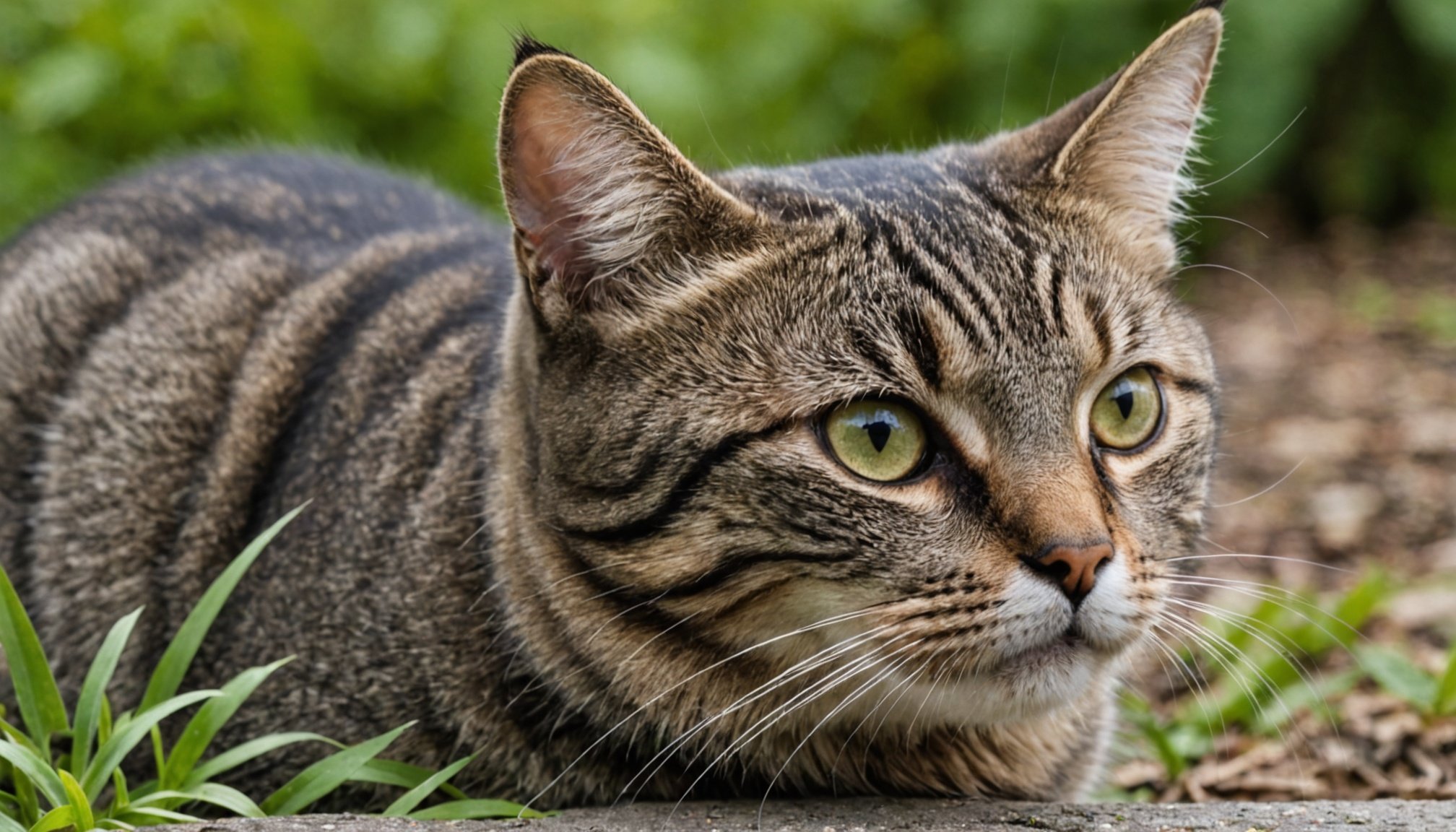Understanding Environmental Stressors in Cats
Navigating the complex world of environmental factors in feline life is crucial for owners aiming to enhance their cat’s overall health. Cats are exceptionally sensitive to their surroundings, and various stressors can significantly impact their mental health.
Common environmental stressors include loud noises, unfamiliar visitors, or changes in household dynamics, potentially leading to anxiety and behavioural changes. Psychological consequences may manifest as reduced appetite, increased aggression, or withdrawal, directly affecting a cat’s health. Recognizing the early indicators of stress, such as over-grooming, excessive vocalization, or litter box avoidance, is vital for timely intervention.
Also to discover : Ultimate guide to identifying and managing cat mange: essential tips for caring pet owners
Understanding how these stressors affect a cat’s behaviour and health allows owners to alter their environment proactively. For instance, creating a secure and soothing space helps minimize anxiety. It is also important to introduce new elements or changes gradually. Cats appreciate stability and predictability in their environment, which can mitigate the adverse effects of environmental factors.
Awareness and sensitivity to the unique behavioral and health needs of cats create a harmonious living atmosphere. Paying attention to subtle signals aids in identifying potential stressors, ultimately fostering a healthier and happier feline companion.
Also read : Designing a safe and enriching balcony paradise for your cat
H2 – Connection Between Stressors and Psychosomatic Problems
Cats are susceptible to psychosomatic issues when exposed to persistent stress. These issues manifest physically as a direct result of mental turmoil. Stress-related behaviors can lead to serious health implications like urinary tract issues or skin disorders. Feline anxiety, often misunderstood, serves as a catalyst for these problems.
H3 – Types of Psychosomatic Problems in Cats
Psychosomatic issues in felines include gastrointestinal disruptions, like vomiting or diarrhea, which can be stress-induced. Skin problems, such as dermatitis, can also arise when a cat reacts anxiously, often resulting from over-grooming due to stress. Recognizing these symptoms is vital for ensuring proper care and timely treatment.
H3 – How Stressors Trigger Psychosomatic Responses
Environmental stressors like loud noises or sudden changes disrupt a cat’s mental equilibrium, triggering stress-related behaviors. The link between external stress and physical conditions emphasizes the importance of differentiated behavioral observations. Proactively managing these stressors can reduce the incidence of psychosomatic issues.
H3 – Case Studies Highlighting Environmental Influence
Research highlights cases where minor modifications to a cat’s environment have led to significant health improvements. For instance, reducing noise pollution has alleviated certain stress-related behaviors. Real-life examples underscore the direct correlation between environmental adjustments and the mitigation of feline anxiety.
Identifying Key Environmental Stressors
Understanding the environmental stressors that impact feline health is crucial for maintaining a harmonious household. Noise pollution is one of the leading factors causing feline anxiety. Cats possess exceptional hearing abilities, so loud or persistent noises can lead to elevated stress levels, causing distress or skittish behaviours.
Household changes, such as moving homes or introducing new family members, can also disrupt a cat’s sense of stability. These changes might result in withdrawal or aggression as a response to feeling unsettled. It’s essential to manage transitions gradually to mitigate negative impacts on mental health.
The dynamics of social interactions within a home play a significant role in a cat’s psychological wellbeing. Relationships with other pets or people affect their stress levels and behaviour. Tensions or conflicts within these interactions can exacerbate feline anxiety, leading to health issues.
To address these stressors, owners should focus on creating a stable, peaceful environment. Recognizing early signs of stress and understanding the role of noise, life changes, and social interactions can help owners implement proactive strategies. These efforts significantly improve feline health and overall wellbeing.
Mitigation Strategies for Cat Owners
Ensuring feline welfare through stress reduction techniques is essential for maintaining a balanced and happy household. As sensitive creatures, cats require a relatively calm environment to thrive. One effective strategy is creating a calming environment where stressors are minimized.
Creating a Calming Home Environment
To foster a soothing atmosphere, control noise levels by placing cat beds in quieter areas of the home and using soundproofing when necessary. Gradually introduce household changes, maintaining some familiar elements to ease transitions. Providing safe, private spaces, such as covered beds or elevated perches, helps cats feel secure.
Implementing Routine and Predictability
Cats benefit from predictable routines, which offer a sense of comfort and stability. Establish regular feeding and play times, and maintain consistent daily schedules, even during household changes. This predictability helps reduce feline stress levels.
Use of Environmental Enrichment and Safe Spaces
To enrich a cat’s environment, introduce varied stimuli like toys, interactive play, and scratching posts. Safe spaces, free from potential stressors, allow cats to retreat when overwhelmed. Incorporating these elements nurtures mental and physical cat welfare, promoting an overall calming environment that minimizes stress for a healthier, happier pet.
Expert Opinions on Stress Mitigation
Understanding how to effectively handle environmental stressors in cats is crucial. Veterinarians provide invaluable insights into managing these challenges. They often recommend routine behavioral techniques, emphasizing the importance of gradual adjustments and creating stable, serene surroundings to help alleviate feline anxiety. Simple practices like maintaining consistent feeding schedules and offering interactive playtimes can significantly reduce stress.
Behavioral techniques are not the sole answer, though. Implementing psychological approaches is equally vital. By observing a cat’s behavioral cues, owners can gauge stress levels and act accordingly. For example, if a cat shows signs of anxiety, offering safe and private areas within the home can create a sense of security and ease. These spaces allow cats to retreat and decompress, crucial for their mental health.
Moreover, veterinarians suggest using tools like pheromone diffusers, which mimic calming cat pheromones, to reduce stress hormones in the environment. This innovative approach not only calms anxious cats but also enhances overall cat welfare. Armed with these expert recommendations, cat owners can foster a healthier, more harmonious environment for their feline companions.
Practical Tips for Cat Owners
Incorporating various cat care tips can significantly improve your cat’s quality of life. Simple changes around the home can reduce stress and boost overall welfare improvement. Key owner actions play an essential role in ensuring a calm environment.
Simple Changes to Reduce Stress
Begin with minor adjustments to eliminate stressors. Place cat beds in quieter locations and ensure they have a designated space away from household commotion. Introduce new items gradually, giving your cat time to adjust and prevent anxiety.
Tools and Products for Stress Management
Numerous tools and products on the market are designed to aid stress management. Consider using pheromone diffusers that mimic calming natural scents. These are effective in reducing feline anxiety and promoting a serene atmosphere. Interactive toys and puzzles can also provide mental stimulation, alleviating stress through engaged play.
Ongoing Monitoring and Adjustment Strategies
Continuous observation is vital for ongoing welfare improvement. Monitor your cat’s reactions to environmental changes and adjust accordingly. This involves being attentive to any signs of anxiety or discomfort. Regularly amending strategies ensures a tailored approach to suit the evolving needs of your feline friend, fostering a harmonious living space.











